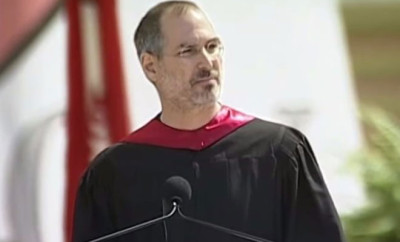
Why Hire a Professional Coach?
Greek philosopher Aristotle said, “Criticism is something you can avoid easily—by saying nothing, doing nothing, and being nothing.” Obviously, that isn’t an option for anyone who wants to be successful as a leader.
Why do executives primarily want to hire a professional coach? What are they looking for?
There are a number of different reasons for hiring a professional coach and to address the critical things that they are looking for. In what follows I have distinguished different levels of executives and identified what they are looking for.
1. Senior Executive Development:
Senior executives have reached a certain level in their careers and know this— That what got them here, won’t get them there. That is, it is clear that they need to develop new skills— skills that not so far available to them that will be needed to progress to greater levels of seniority, responsibility, and even to make a difference. They may not even be aware what is needed and they wish to explore with someone who can help them discover what this all means to them. Mostly, coaching at this level has to do with moving from management to leadership skills.
Another dilemma is that, at senior levels, one often needs to focus outward from the role and network and influence people over whom you have no direct line authority. To do this requires the ability to delegate, monitor and see the role less as a functional role (silo) versus a corporate role (whole of business). As a rule an objective external person (an executive coach) will be a better fit than an internal coach. Why? Because of confidentiality and trust. However, an internal mentor may also be appropriate — a mentor is an expert in the area the executive aspires to and transfers skills and offers advice, while a coach helps the executive to develop well-formed outcomes and strategies, as well as ecological frames and states that facilitate their development – that is, from a meta perspective.
2. Middle Management Development
Similar to senior executives, coaching middle management has probably more to do with leadership and developing the ability to lead people and teams to produce results. The coaching will focus on using people skills, or soft skills, rather than in an authoritarian, or command, model. The middle management executive will be talented and successful more as an individual contributor and so now needs to work through people.
I think it should be noted that a key factor in any executive’s development is the relationship they have with their manager as well as the culture of the environment. Both of these factors are part of the matrix in which we operate, and can be derailers if ignored.
3. Remedial
Usually an executive who needs remedial coaching is talented in one area of performance, but deficient, or dysfunctional in another. It may be that the executive is a harsh driver of business results, but this has an adverse impact in the people management styles. Conversely, such executives may have exemplary people skills, but struggle to hold people accountable for results and so standards are poor. Another scenario is that the executive lacks certain technical skills (or the will) in order to fully execute their roles and the coach can assist in supporting the executive in the non-technical development side of the issue. I think it should be noted that remedial programs tend to have a lower success rate than other coaching programs. Given that, be sure to pre-frame for the protection of all parties.
4. On-Boarding, or Transitioning
It can be very effective to provide a new hire with an executive coach to help them acclimatise and come up to speed faster than would otherwise be possible. Getting to know the ropes and navigate a new culture and develop relationships in the power lines of an organisation can be tricky– both the hierarchical and/or the informal politics of culture can determine the long term effectiveness of a new hire, in either positive or negative ways.
Similarly, an executive transitioning through a promotion, or across to a new role can be challenging and may warrant an executive coach to provide support for a time, while the executive finds their feet.
5. Team Development
Often it is useful to have an executive coach facilitate the development of an executive team. Teams can range from intact teams (they commonly work together on a day-to-day basis), to looser groups who may form and break routinely, or on an ad hoc basis. This process is commonly referred to as High Performance Team Development. Teams, or groups, can almost always improve performance by getting clear about purpose, unravelling barriers and relationship issues and committing to common goals. Getting to know one another better, strengths and weaknesses, giving and getting feedback are usually very powerful contributors to improving relationships, trust and results.
Why a Professional Coach?
In business, the stakes are high. As a rule, we do not appreciate the degree of difficulty in performing executive roles, managing constructive relationships, or just being on purpose and the impact these factors have on business results and staff stress levels. There are many stress lines in any system, or organization. Managing up to seniors, across to peers and down to subordinates can be tricky as the atmosphere gets rarer and more politicized. Gender, culture, competency, financial, competition, change, et al, are all elements that create tension and so need attention.
So, a coach who knows and understands these dynamics is better equipped to provide an effective service for the executive, the teams they work in and the organisation.
Organisations need to choose carefully who they engage as coaches, as the coach is in a position to influence great positive and/or negative outcomes. It may be important to engage a coach who has worked in the corporate field for some years and who is seasoned in the experiences that the executive is facing. However, a coach needs to be well trained in the distinctions of coaching (Socratic mode) and so psychology training is often a good base to build coaching expertise upon. NLP based training is also a very good requisite, because of the acuity in tracking the client and helping to align them with positive and enabling frames.
I think it should be noted that a professional coach is to be sensitive to clinical psychological issues and can appropriately suggest that a client take appropriate professional interventions, as necessary. It is usually best not to proceed with coaching when a client is engaged with a clinical psychologist or psychiatrist, or on strong mind altering drugs.
Here is an Example: Senior Executive Development
As Marshall Goldsmith’s book entitled “What got you here, won’t get you there” suggests, moving up the ladder isn’t necessarily just a promotion. Or, as Ram Charan points out in ‘The Leadership Ladder,’ there are fundamental differences in the roles from one level to the next. There are traps for the unwary executive who isn’t well prepared for their next move up the ladder, because it isn’t just a question of doing more of the same, doing it better, or just telling someone else to do what you were doing.
Stuart had been with his global property development company for 5 years in a construction role, managing large building projects with great success. He was given the best teams and resources and could be relied on to navigate complex and difficult negotiations, bring projects in more or less on time, on budget and in compliance with high quality and safety margins. His project teams really liked working with him and relished the next ‘big one.’
Stuart had been recruited from competitive property magnate by his previous boss and the time had come to follow his boss up the ladder. His boss was a highly skilled people person, who could navigate the corridors of power cleverly and had backed Stuart, amongst others, to deliver the goods in his portfolio. But, there was a problem.
Stuart complemented his boss very neatly. His boss was the people person and Stuart was the skilled operator. There was a concern amongst the senior management that Stuart would struggle with the move to his boss’s upper management role, because he was seen to lack the people skills. Having had the privilege of working with only the best resources, he would not tolerate anything but outstanding talent and standards from his team members. Anyone he regarded as below par would be removed from his teams and assigned to other projects—in the past. Now he would have to deal with all levels of proficiency and commitment and he had proved unwilling to tolerate or develop anyone but the best.
Another issue was that his boss had shielded him from the complexities of senior management manoeuvrings. When Stuart had been exposed on a few occasions, he had not always endeared himself, by seeming critical and somewhat naive about the subtleties of influencing complex political situations. His strength had become a potential liability. But he was bored and stale and ambitious – and the company didn’t want to lose an outstanding performer.
So an executive coach was commissioned to prepare him as a possible successor for transition into senior management. Stuart was keen to engage, but somewhat wounded by his most recent annual appraisal. To date, his assessments had been exemplary. Always a star performer, with the highest ratings and bonuses. If there was ever reference to his people management style, it was always over shadowed by his results in delivery.
His boss was somewhat exasperated, because, although Stuart protested understanding of the problem, the boss was receiving complaints from staff below Stuart about his demanding and intolerant expectations. Stuart would stale-mate the discussion by challenging his boss with the taunt that he was obviously now expected to let his standards and delivery drop to mediocrity, thus damaging profit and reputation. Nevertheless, Stuart’s latest appraisal was rated average minus and his bonus was meagre and he was upset. In his head he knew that the assessment was a message to change his style in lieu of the succession context, but his heart felt betrayed and hurt and he was complaining bitterly. The relationship with his boss was now strained, after years of enjoyable partnership—he felt used. None of this was helping his promotion prospects.
His coach listened and validated his point of view. It didn’t take long to get to the bottom of his depression before he spontaneously conceded that his prospects of promotion looked distant and something had to change – probably him. Together he and his coach touched on what those changes might be and how they might be of benefit. At times Stuart would protest about why it was him who had to change — after all, look at his track record!
During the process the coach had Stuart do a couple of psychometric profiles and these showed something undeniable — that Stuart may not be suited to senior leadership roles, as his dominant preference was as a ‘fix it man.’ He liked getting his hands dirty, rolling up his sleeves and taking a leadership role while ‘doing it’ with his colleagues. A true team player and leader at the coal face.
Now Stuart faced a dilemma. He wanted to know if he could change his fundamental DNA?! When asked if he thought it was necessary to make fundamental personality changes, he wasn’t sure. When asked if he thought ‘he had’ behaviours, or if his behaviours ‘had him’ he laughed wryly, but went away and thought about this, like a worm turning in his head. His wife’s opinion didn’t help because she wondered why he needed a coach to tell him what she already knew and could have told him quite adequately.
Now the coach asked Stuart to visualise the future and how it would play out on current trajectory and he didn’t like the view. He wasn’t sure that five years, or more, ‘doing it’ in a hard hat was such a good look. So he started making new pictures which suddenly looked more appealing and felt like a challenge worth shooting for.
In one of the regular coach facilitated meetings with his boss, he let his guard down and explained these thoughts to his boss. He never got over the reaction. His boss looked at him and said he was shocked and delighted to hear these words from Stuart and that if he continued on this line of thought into the future, there was definitely hope of succession into more senior leadership roles – but he would need get on with it, as changes were afoot in the near term.
In the next few coaching sessions Stuart planned his next steps. He had to change his relationships to his subordinates – less command/control, less micro management, more clarity about setting expectations, more delegation, monitoring and accountability. He found this more easily said than done. Keeping his hands off was tough because he kept wanting to dive in. Avoiding the requests of his subordinates for him to be involved, like it was, was painful. It felt like some kind of betrayal —for a while. In the role plays during coaching sessions he would growl and hold his head and doubt that he could go the distance. It didn’t make it any easier when things went wrong on projects and he was certain they would not have happened if he had been involved.
After a while, he admitted that he was starting to enjoy the new role and behaviour. It surprised him that it wasn’t withdrawing from the coal face that he was enjoying, it was his subordinates lifting to the challenge and starting to take responsibility and becoming less dependent on him. Now it was others’ success that began to give him pleasure and, especially, his role in supporting their growth and progression—true leadership.
Now he and his coach began to explore new skills, like how to be a mentor and coach to his subordinates, how to manage upwards and influence superiors in a constructive way.
This lead to a surprising challenge. His boss seemed to become distant and critical as Stuarts’ relationships with his boss’s peers and superiors improved and they began to communicate direct with Stuart. As Stuart moved out of the shadow of his boss’s protection, his boss reacted by withdrawing from their warm friendship. Stuart tried to placate his boss, but to little effect.
Then a bitter-sweet victory. Stuart was promoted to a higher level, but in a different division. His boss too was promoted to the head of his division, so remained the more senior. In time they became more amiable, but it never returned to the partnership they had enjoyed in the early years. Stuart philosophically said that that was progress for you.
When his coach later asked him his opinion on whether people could change, his answer was something like, “Yes, you can, but I’m still the same, really— you ask my wife! Actually, is this supposed to work at home as well, because things have changed there too ;-).”







